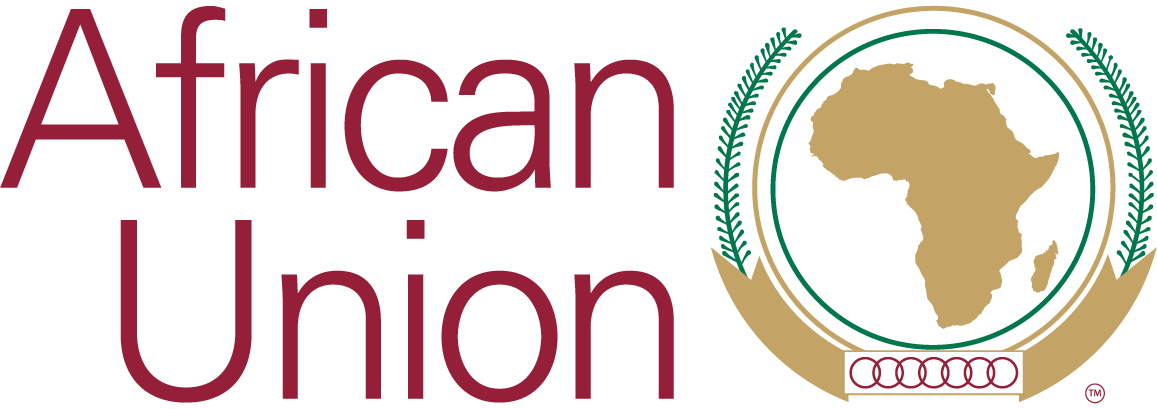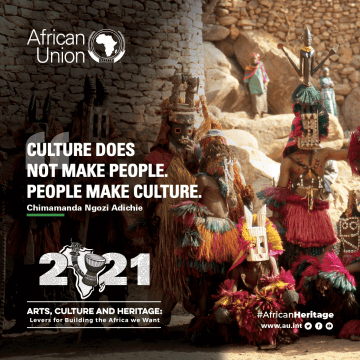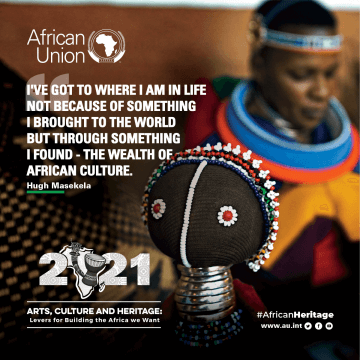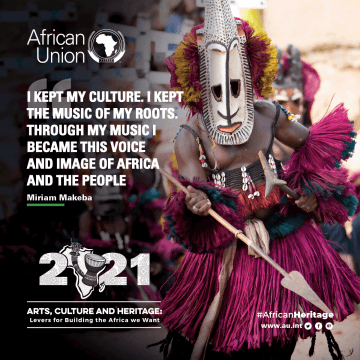Migration trends
The single biggest driver of migration is the search for jobs and better wages: 80 per cent of migrants are migrant workers. The First Labour Migration Statistics Report in Africa1 (2017) estimates that there are 18,000,000 African migrant workers within the continent. The International Labour Organization (ILO) estimated the number of migrant workers on the continent at 8.4 million in 2010, out of a total of 19.3 million migrants (persons living outside their country of origin) in Africa that year.2 In 2010, the World Bank estimated that 77% of African people living in countries other than their birth place were from Sub- Saharan Africa.3 These figures typically omit the millions more Africans involved in short term, seasonal and temporary migration, the hundreds of thousands of cross-border commercial and other mobile workers, as well as refugees and forcibly displaced persons joining the labour market.
As noted in several IOM studies, more than 80% of African migration takes place in Africa, i.e. is mainly intra-regional (mainly within West, East and Southern African regions) and inter-regional (from West Africa to Southern Africa, from East/Horn of Africa to Southern Africa and from Central Africa to Southern Africa and West Africa).4 The intra-regional migration proportion for Africa overall is estimated at 52.6%, comparable to 59% in Europe and 54.7% in Asia. However, Sub-Saharan Africa has a higher intra-regional rate estimated at 65%. This intra-regional mobility (migration within the region) represents more than four out of five migrants in The Economic Community of West African States (ECOWAS). The proportion moving within the same sub-region is close to 80% in West Africa, 65% in Southern Africa, 50% in Central Africa, 47% in East Africa, although only 20% in North Africa.Where total emigration from Africa has increased substantially in the last decades in absolute terms, but the proportion of emigrants to total population is currently one of the lowest in the world, though with marked variations across countries. However, demographic imbalances between different parts of the world is expected to intensify, most prominently between countries in Africa.5
Socio-economic status, poverty, political, security, environmental as well as global structural causes all prompt migration within and from Africa, which will affect the national and regional labour markets. Demand for cross-border mobility will only increase in the future. Thus, effective governance of migration is a critical challenge to overcome by African states.
The shortages challenge
A majority of African countries are challenged by labour and skills shortages present in some sectors, while at the same time battling with unemployment and a growing youth bulk in others. A median age of international migrants in Africa at 29 years compared to a global median age of 39 years, shows this considerable age/youth challenge to address. The obvious challenges this mismatch of supply and demand pose could be addressed through regional skills pooling enabled through labour mobility, which could help ensure that labour is more adequately allocated where it is most productive and needed. The consequences of this mismatch are potentially rather impactful; as a driver for migration, as a source of perceptions of migrants arriving and leaving countries, as a perception of government responses to national and regional challenges, etc. Addressing the challenges with supply and demand are thus essential. Though it is difficult to evaluate the global cost of barriers to skills mobility within Africa, it is estimated that the losses to the global economy due to labour shortages stand at US$10 trillion by 2030, or 10% of the global GDP6, and that a 3% increase in migrant worker stock from developing to high- income countries by 2025 would yield gains to the global economy of US$356 billion7. Employers in developed countries could face a shortage of 16 to 18 million university- educated workers in 2020 while a gap of 23 million university-educated workers is projected in China.8 The European Commission has estimated that by 2020, 16 million more jobs in the European Union will require high qualifications.9 It is thus not only the African countries that stand to gain from improved migration governance and a better match between supply and demand. Improved labour migration governance at the REC and Member State level has the potential to yield significant benefits to both origin and destination countries. For instance, labour migration has played an important role in filling labour needs in tourism, mining, commercial distribution, manufacturing, domestic work, agriculture, construction, health, education and other sectors, thus contributing to economic development of many destination countries in Africa. Conversely, the beneficial feed-back effects of labour migration such as indirect job creation through remittances (e.g. the provision of education, health and other social services), knowledge and skills transfer, social security contributions, and labour market reintegration (e.g. micro enterprise development during the return phase) have in some cases made major contributions to economies of origin.
The gender element (Vulnerable female migrants)
46.1 percent of international migrants in Africa are women according to data for 2015.10 And for the majority of the young African women and girls who migrate, necessity rather than choice is the primary reason to migrate, and they often end up working in traditionally unremunerated female roles within the global economy at their destination. Female migrant workers are thus a very vulnerable group of migrants, also susceptible to working in the informal economy, which renders them even more vulnerable. In the context of the new AU Women and Gender Strategy (2017-2027), the issue of migration appears as a key priority of Pillar 2 on security, dignity and resilience.
It is becoming apparent that as some African countries join the global economy as key suppliers of migrant labour to power export-processing countries, a new trend of contemporary young female migration to low-wage sectors is emerging. Young women in Africa constitute a significant percentage of the economically inactive labour force in the formal sector and school drop-outs. It is this large young African female demographic that streams into the international labour market to meet the global demand for low-skilled and low-wage labour, hence the poignant positioning of female migrant workers as “servants of globalization”.
Linked to the important fact of female migrant workers’ contribution is the need to increase employment opportunities for women through skill enhancement and more opportunities for work in high-income countries. Globally, the proportion of women of all ages among all international migrants fell slightly, from 49.3 per cent in 2000 to 48.4 per cent in 2017. Between 2000 and 2017, the proportion of female migrants in high income countries fell from 49.0 to 47.7 per cent.
It is estimated that more than 90 % of all international migrant workers in the domestic sector, providing elderly- and child care and house cleaning, are women and girls. And yet the domestic sector remains the least regulated and monitored by most states.11 As a result, many young female migrant workers’ rights are abused. By and large, there is not a minimum wage, designated working hours nor social security or effective means for remedy for workers in the domestic sector.
Additionally, recent reports offer evidence of the enormous contribution of female migrant workers to their countries of origin. According the IFAD report on remittances, female migrant workers tend to send a higher proportion of their income regularly and consistently home. 12 This despite the fact that women earn less than men and remit approximately the same amount as men.
Another key factor in female international migrant workers’ protection is in regard to international liberalization of commercial sex work and sex tourism which has resulted in mass irregular migratory outflows of young women and girls, many of whom are trafficked. Current studies show that more than 90 per cent of the victims of trafficking are young women and girls, who are victims of institutions and networks. This phenomenon is most troubling when considered against new studies showing that 5-10% of the world’s kidney transplants come from victims of trafficking. Therefore, protection of women and girls within the global economy must remain paramount.
In view of the above-mentioned realities, it is important to stress that failure to protect the rights of young and female migrants and to expand opportunities for safe and meaningful employment may instead increase their vulnerabilities, widen the gender gap and undermine their empowerment and ability to meaningfully realize their aspirations. And also decrease the possibly positive effects on both countries of Origin and Destination from female migrant workers.
- Labour Migration Statistics Report in Africa (2017), 1st Edition, AU
- ILO, 2010. International Labour Migration A rights-based approach. International Labour Office, Geneva. P. 17
- Bilateral Migration Matrix, World Bank, 2010
- Revised Migration Policy Framework for Africa, 2017
- Ibid
- The Global Workforce Crisis: $10 Trillion at Risk (Boston, MA: The Boston Consulting Group, 2014, Rainer Stack, Jens Baier, Matthew Marchingo, Shailesh Sharda,
- World Bank, Global Economic Prospects 2006: Economic Implications of Remittances and Migration (Washington, DC, 2005)
- R. Dobbs, et al., The world at work: Jobs, pay and skills for 3.5 billion people, McKinsey Global Institute, June 2012, p. 2.
- European Commission, EUROPE 2020 – A strategy for smart, sustainable and inclusive growth, COM(2010) 2020, 3 March 2010, p. 18
- United Nations, Department of Economic and Social Affairs, Population Division (2016): International Migration Report 2015.
- As an example, The Convention on Domestic Workers, put in place to enforce minimum standards for the protection of workers in private spaces has been adopted, but only ratified by only 24 countries globally, including only three African countries, since is entry into force in 2011.
- IFAD: Sending Money Home: Contributing to the SDGs, One Family at a Time. 2017







